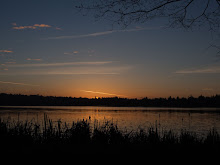New York City. I had seen pictures, of course. But New York was not a place that lived in my imagination. Up until I read about Arthur’s project in Greenwich Village, New York was just “the big city.” And in Adventist culture, “big city” was synonymous with crime, air pollution, crowds, muggers, prostitution, litter. Our prophet had advised people to “leave the cities.” Big city in Adventist parlance was “wicked place.”
Sure, New York had the Statue of Liberty, but the Statue wasn’t really part of the city. And there was Carnegie Hall and its famous concerts. But for an Adventist, the most important fact about Carnegie Hall was the church had rented it in the fifties a major series of evangelistic meetings. This was designed to give our work “stature” in the city. It showed we had something to say to people of culture and influence.
The Metropolitan Museum of Art was simply not part of my awareness. And Adventists didn’t go to theaters so Broadway held no appeal. Greenwich Village had slipped into my consciousness, but somehow as a separate category from the city of skyscrapers and subways. So I landed at LaGuardia curious and excited but with no clear picture of the place I was coming to.
The first shock came at the airport. Colin was there to meet me at the gate. A bright-eyed, small, almost elfish, Britisher. He walked with a painful-looking limp caused by childhood polio. He shook my hand like with great vigor.
“Great to see you, ole chap. Welcome to New York.” We picked up my suitcases from baggage claim, then headed out to the curb. I figured we would pile into Colin’s car for the drive to the New York Center. But Colin explained he had been unable to borrow a car that evening. His friends had something going on and needed their car. He himself didn’t have a car because a car would just be a hassle living in Times Square.
I had never met an adult who didn’t have a car. Well, when I was a kid, our Black maid didn’t have her own car, but her husband did. And one or two of the Black men who did our lawn had been without cars. But an adult white male without a car?
The bus dropped us off at the Eastside Airline Terminal, a fancy name for a bus depot at 35th and First Avenue in Manhattan. We took the R subway from 34th up to 49th. Coming up the stairs out of the subway we were deep in the canyons of midtown three long blocks from Colin’s apartment. The side street was dark. We dodged other pedestrians and garbage cans. I shifted the aching weight of my suitcases from hand to hand. Taxis passed, making a peculiar thunk as they hit potholes and irregularities in the pavement. I stared up at the buildings that seemed to vanish overhead in the misty rain. The street wasn’t crowded, just populated. I imagined people passing were noticing my astonished wonder as I craned my neck staring up with wide-mouthed amazement at the towering buildings. At street level there were metal roll-up doors and old, worn massive stones that formed stoops and the foundations for loading docks. It was an alien world, full of magical enchantment.
We crossed Times Square, then walked the half block down 46th Street to the glass doors of the Center. There, we hauled my suitcases up a flight of stairs to the elevator, then rode to the sixth floor. I would be sharing a bed room with Calvin, a student from California.
“Here you are, Ole Boy. Calvin has the bed next to the door. This is your dresser here. Why don’t you unpack, then I’ll show you the building.”
After Colin left the room, I opened the window and stuck my head out. Three stories down was a roof. Ten or fifteen feet across from me were the windows of the rooms in the other wing of our building. Looking up I could see the giant red sign on top the twenty-eight-storey Hotel Edison behind us.
Inside the room itself, the building’s age was obvious. The paint on the molding around the doors and windows was dozens of layers thick. Crack patterns in the walls suggested plaster over lathe instead of sheet rock. The ceiling was nine feet high rather than the conventional eight. There was a small closet stuck out into the room in one corner, obviously added as a concession to more modern habits.
We toured the building. It had been built as a hotel and theater. The denomination purchased it in the fifties for use as an evangelistic center. The theater which took up the first two floors served as home to an Adventist congregation. The third floor was offices for various church organizations. The fourth floor housed two small congregations–a Ukranian group and a Hungarian congregation and included apartments for the families of two men who did the maintenance on the building. The top two floors were apartments and guest rooms. Colin showed me how to set the alarm. Told me what to do if the alarm went off and he wasn’t around. (Call Peter, the maintenance guy.)
Back in the apartment, Colin told me about my roommate. (Calvin was out of town visiting friends in Pennsylvania.) He talked about his work and his dream of a center that would draw young people from all across the country to study theology and engage in active ministry in the heart of the city. I was thrilled to be part of something so audacious and grand.
Sunday, May 2, 2010
Subscribe to:
Post Comments (Atom)


No comments:
Post a Comment